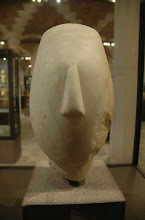
Tuesday, December 16, 2008
More than 1000 species discovered in Mekong delta
 Scientists have discovered more than 1,000 species in Southeast Asia's Greater Mekong region in the past decade, including a spider as big as a dinner plate, the World Wildlife Fund said Monday.
Scientists have discovered more than 1,000 species in Southeast Asia's Greater Mekong region in the past decade, including a spider as big as a dinner plate, the World Wildlife Fund said Monday.A rat thought to have become extinct 11 million years ago and a cyanide-laced, shocking pink millipede were among creatures found in what the group called a "biological treasure trove".
The species were all found in the rainforests and wetlands along the Mekong River, which flows through Cambodia, Laos, Myanmar, Thailand, Vietnam and the southern Chinese province of Yunnan.
"It doesn't get any better than this," Stuart Chapman, director of WWF's Greater Mekong Programme, was quoted as saying in a statement by the group.
From BBC: Dragon millipede (Image: Somsar Panha)
The "dragon millipede" (Desmoxytes purpurosea) was first described in 2007 by scientists in Thailand. Researchers suggest the bright colouring acts as a warning to would-be predators, as the millipede has glands that produce cyanide as a defence mechanism.
Conservation group WWF says that more than 1,000 species new to science have been recorded in South-East Asia's Greater Mekong region over the past decade. These include 22 snake species, including this green pitviper (Trimeresurus gumprechti).
The Laotian rock rat (Laonastes aenigmamus) was first recorded by scientists at a food market in Laos. Remarkably, researchers say this species is the sole survivor of an ancient group of rodents understood to have died out 11 million years ago.
http://www.huffingtonpost.com/2008/12/15/gumbrechts-green-pit-vipe_n_151114.html

Wednesday, December 10, 2008
Saying Hello To London Through The Telectroscope in New York
 If you are in New York, go to the Fulton Ferry Landing by the Brooklyn Bridge and peer at London with a monstrous telectroscope. If you are lucky, your buddies in London happen to be on the South Bank by the Tower Bridge where a similar telectroscope stands. And guess what you will see? Each other! Why would that be in any way interesting, considering that we can webcam with anyone any time?This prehistoric-looking getup is ART created by London artist Paul St. George. And he, apparently, is only fulfilling the dream of his great-grandfather, Alexander Stanhope St. George. The elder St. George dreamt of burrowing a tunnel across the ocean, setting a magnifying telectroscope at each end so that people could see each other.If the fake tale isn’t enticing enough, the gizmo itself is worth the trek. It took two days and nights for the massive contraption to grow from the river mud and morph from a six-foot, revolving, metallic drill bit to the final tower of a 37-foot-long telescope. It will be there until June 15. To set up a viewing date with your buddies at the other end, go to telectroscope.net. By Tuija Seipell
If you are in New York, go to the Fulton Ferry Landing by the Brooklyn Bridge and peer at London with a monstrous telectroscope. If you are lucky, your buddies in London happen to be on the South Bank by the Tower Bridge where a similar telectroscope stands. And guess what you will see? Each other! Why would that be in any way interesting, considering that we can webcam with anyone any time?This prehistoric-looking getup is ART created by London artist Paul St. George. And he, apparently, is only fulfilling the dream of his great-grandfather, Alexander Stanhope St. George. The elder St. George dreamt of burrowing a tunnel across the ocean, setting a magnifying telectroscope at each end so that people could see each other.If the fake tale isn’t enticing enough, the gizmo itself is worth the trek. It took two days and nights for the massive contraption to grow from the river mud and morph from a six-foot, revolving, metallic drill bit to the final tower of a 37-foot-long telescope. It will be there until June 15. To set up a viewing date with your buddies at the other end, go to telectroscope.net. By Tuija Seipell
Times are tough: National Academy Sells Two Hudson River School Paintings to Bolster Its Finances
 By RANDY KENNEDY
By RANDY KENNEDYPublished: December 5, 2008
(image: Frederic Edwin Church’s “Scene on the Magdalene” (1854), an oil on canvas)
The National Academy, the venerable artist-governed museum and school on the Upper East Side of Manhattan, has quietly sold two Hudson River School paintings from its collection to shore up its finances and enable it to show more of its holdings on a consistent basis, the academy’s officials said on Friday.
The sale of the paintings, Frederic Edwin Church’s “Scene on the Magdalene” from 1854 and Sanford Robinson Gifford’s “Mount Mansfield, Vermont” from 1859, was sharply criticized by the Association of Art Museum Directors, which has a longstanding policy of strongly discouraging museums from deaccessioning artworks unless the money is being used to acquire other works and to enhance a collection — not to raise operating funds.
The association asked its members to cease lending artworks to the academy and collaborating with it on exhibitions....
http://www.nytimes.com/2008/12/06/arts/design/06acad.html
Subscribe to:
Comments (Atom)






